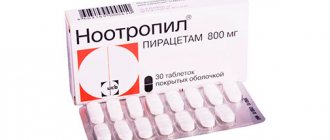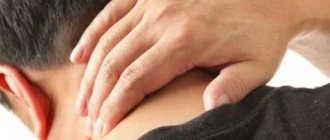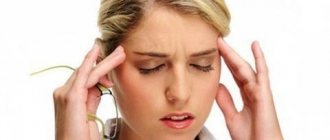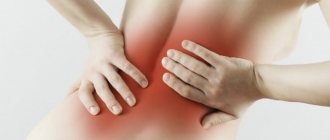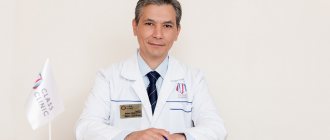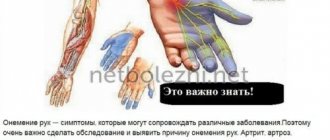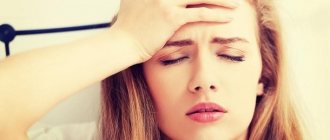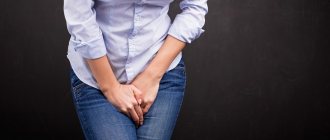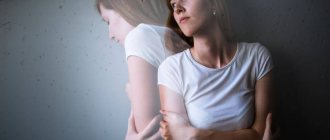Acupressure is an ancient system of healing the body, the principle of which is based on the idea of the interaction of energy flows within the body and the possibility of direct influence on them.
With the help of some knowledge, you can harmonize a person’s condition and get rid of many diseases by influencing certain points on the head and body, arms and legs, where a large number of biologically active zones are located. The practice of acupressure relieves discomfort, pain, cramps, including headaches.
Types of headaches and their characteristics.
Types of headaches vary depending on the cause and location.
Types of headaches by location:
- in the temples;
- in the back of the head;
- in the crown and crown;
- in the forehead area.
Due to the occurrence:
- Psycho-emotional, lead to constant tension in the neck muscles, neck and upper back.
- Difficulty with bowel movements, constipation.
- Incorrect position of the body, and, as a result, curvature of the spine and impaired blood flow to the brain.
- Pain and eye fatigue due to prolonged work on the computer.
- Migraine.
- Colds - inflammation of the throat mucosa, rhinitis. Swelling of the nasopharynx can cause bursting headaches.
- Hypertension.
By massaging the right headache points on the head, you can relax the neck muscles, restore blood circulation in the tendon helmet covering the skull, and thereby improve oxygen saturation of the brain. Impact on certain areas relieves tension in the eyes, which can cause bursting headaches and a feeling of heaviness in the back of the head.
Features of massage.
You can influence the point in several ways: apply pressure for 7-10 seconds with your index finger or thumb, tap, and also make circular movements. Paired points located symmetrically on both sides of the body should be worked on simultaneously.
Preparing for massage:
- First you need to wash your hands.
- Next, warm your palms.
- Find a quiet place so that no one will disturb you during the massage.
- As an addition, you can turn on calm music at low volume to quickly achieve the relaxation effect.
At the point being worked on, pain, swelling, pulsation, and warmth may be felt, which is a normal response to the impact. The main thing is not to press too hard. In the Chinese tradition, to localize points, a measure of length is used - cun, which is equal to the width of the patient's thumb.
Location and features of active points for headaches.
Impact on active points for headaches on the head seems to be the most effective, since it provides the opportunity to directly influence the causes - tension in the tendon helmet, occipital, zygomatic and frontal muscles.
Points on the scalp
The main points in the scalp are:
- Bai-hui. If you draw mental lines connecting the tips of the ears and a line from the middle of the forehead to the top of the head, the bai hui will lie at their intersection. Located in the middle of the tendon helmet, exposure to the point improves the supply of the soft tissues of the head and brain; Particularly effective for pain in the upper part of the head.
- Feng chi. The paired point is located 2.5 cm above the hair zone, on both sides of the midline of the neck, behind, in a depression next to the trapezius muscle. A very important area - it also affects the occipital muscles, neck and back, promoting their gentle relaxation. Relieves pain of various etiologies - associated with stress and spastic muscle tension, colds, eye fatigue. The point affects cerebral circulation, as massage of this area improves blood flow in the cervical artery.
- Feng fu. It is located on the line of the spine, in the hollow under the base of the neck. The point is in direct contact with the vessels supplying the brain with blood; this is the only place where large nerve nodes are accessible to direct influence. Her massage eliminates cerebral vascular spasm.
- Tian-zhu, paired point. It is located on the energy line of the bladder, a disorder in which is associated with a feeling of heaviness in the occipital region. It is located on both sides of the spine, 1.3 cun from it, at the border of hair growth.
- Shan-sin. Localized in the midline above the hair growth of the forehead by 1 cun. Impact on this area is effective for soreness of the parietal and frontal region, and it also relieves pain associated with a runny nose and swelling of the nasopharynx.
- Tou-wei. It is located in the corner, at the intersection of the hairline on the forehead and the side zone. The point is located on the stomach channel, disorders in which are associated with pain in the front of the head, radiating to the eyebrow area. In addition to headaches, it treats lacrimation and discomfort in the eyes, is effective in cases of damage to the facial nerve, and relieves pain in the temple area.
- Shuai-gu. The point is located at a distance of 1.5 cun from the highest point of the auricle. A very effective point on the head for the treatment of headaches in the temples and sides of the head, effective for conjunctivitis.
- Jiao-sun is located immediately above the top point of the auricle. Impact on this area is effective for migraines and toothache.
Dots on the face
The points on the face have their own characteristics:
- Yin-tang. It is located in the hollow between the eyebrows, clearly in the middle. Massaging the point clears your head and relieves tired eyes, and is especially effective for pain in the forehead.
- Tsuan-chu. The point at the base of the eyebrows helps reduce pain in the front of the head and can also relieve nasal congestion.
- Ju-liao. To find a paired point, you need to mentally draw a line down from the pupils, and perpendicular to it - a line from the edge of the wings of the nose, at the intersection, under the cheekbone, this point will be located. Helps with a lack of blood supply to the vessels of the head, and also relieves tension from the eyes, since there is a branch of the facial nerve and the temporal artery.
- Yu-yao. The paired point is located above the pupil, at the break of the eyebrow. Relieves pain in the eyeballs and forehead.
- Jing-ming. The point is 2-3 mm away from the corner of the eye; its massage will be effective for eye fatigue and, accordingly, heaviness in the head.
Headache points on the head are most often used in treatment sessions and are mentioned in almost all combinations of points associated with this problem.
Points on the hands
On the hands, as a rule, there are universal points that contribute to the overall restoration and strengthening of the body, cure colds and harmonize energy flows. The convenience of their location makes it possible to have a massage session even outside the workplace.
- Ha-gu. It is mentioned in almost all instructions for treating headaches with acupressure, a universal point. You can find it by connecting your straightened index finger and thumb; the top of the resulting tubercle will be the he-gu point. Relieves pain caused by psychosomatic causes, prolonged stress and depressed state of mind. This area is also effective for headaches caused by colds. Massaging the Hegu point will be effective for constipation, which often causes headaches in the front of the head. It is not recommended for women to massage this area during pregnancy.
- Hou-si. If you clench your hand into a fist, then the highest point of the fold at the little finger will be the desired zone. It is connected to the back of the head, neck and upper back muscles, so its massage will be effective for stiff neck muscles, as well as tension in the collar area.
- Lao Kung. It is very easy to find - if you clench your fist, the desired point will be under the nail of your middle finger. Lao Gong is used for pain caused by instability of the nervous system - hysteria, anger, depressed state of mind, and it is also effective in relieving pain caused by migraine.
- Wai-guan. Location: 2 cun higher on the forearm from the wrist line. Responsible for headaches at elevated temperatures, nasal congestion, massage of this point will be effective for discomfort in the front of the head.
Points on the feet
Many meridians originate on the feet, passing through the entire body and ending on the head, so it is also necessary to use their source points.
- Ney-ting. This channel of influence is located between the 2nd and 3rd toes, at the end of the metatarsal bones. It refers to the leg canal of the stomach, which also passes through the face. By massaging this area, you can indirectly influence pain in the front of the head and relieve toothache.
- Tai-chun. It is located between the first and second metatarsal bones, in a depression. Exposure to it reduces emotional stress and associated dizziness and headaches, swelling of the eyes.
- Tzu-lin-qi. The channel of this point runs along the area of the shoulders, neck, cheeks and outer corner of the eye, so by massaging it, you can influence these areas, relax the neck muscles and stabilize the blood supply to the head.
- Shen Mai and Jing Men located on the outer surface of the heel, applying acupressure to these points will relieve pain in the crown and back of the head.
- Yunquan point. It is located in the middle of the foot in a depression that is formed if you press your toes. The point is a place of rapid circulation of QI energy; exposure to it relieves pain in the crown of the head, dizziness, and is used to increase the analgesic effect of acupressure massage in general.
Points on the body
There are a lot of channels for influence on the human body, but the technique highlights the main ones:
- Qi-she. Paired points located on the neck, above the upper head of the clavicle. Massage of the points causes relaxation of the back of the head and neck, and also treats pain and swelling of the throat. Massaging this area is quite difficult - the finger sinks into the soft tissue, so it is better to work on it by tapping.
- Yun-men, paired point. Localization - in the subclavian fossa, 6 cun from the midline of the body. The point is effective for pain associated with hypertension.
- Tzu-san-li, "point 100 diseases". In the Chinese tradition, influencing this point is associated with the overall health of the body, rejuvenation and increased energy. If you sit so that your knee forms an angle of 90 degrees and cover it with your hand, place the middle of your palm on the center of the knee, the protruding part, then the point will be under the ring finger.
This is a point of general influence that improves overall well-being; among the positive consequences of its stimulation is the elimination of constipation, which often leads to headaches.
“It just came off” or what is acupressure?
The expression “out of the blue” did not arise out of nowhere. By influencing biologically active points, you can help the body get rid of increased appetite, headaches, strengthen the immune system, or become even more beautiful.
Acupressure or acupressure is a type of reflexology, which is based on irritation of mechanoreceptors through pressure (pressure) at acupuncture points. Acupressure can be used either independently or as a component of general or segmental massage. In many cases, it is highly effective and accessible; many acupressure techniques can be recommended for the patient to perform independently for preventive or therapeutic purposes. The important thing is that acupressure can be used to provide emergency relief.
There are many types of acupressure, differing in the methods of influence. The place of influence is always AT (acupuncture points). You just need to avoid particularly sensitive and sharply painful areas. Acupressure is contraindicated for damaged or inflamed skin.
Conducting acupressure involves the use of basic techniques of classical massage (stroking, rubbing, kneading, vibration), transformed into special techniques depending on the anatomical features of the acupuncture zone and the purpose of the treatment. Most often, massage is performed with the tip of one (I or II), two or three (I, II and III) fingers, less often with the side surface or base of the hand. There are two degrees of irritation during acupressure.
Weak stimulation involves rapid, short-term exposure with an intensity sufficient to irritate the skin, subcutaneous tissue and muscles to produce the intended sensations. The frequency of movements is high (3-4 per 1 second), the duration of impact on the AT is 30 seconds, the number of stimulated points is 6-8 or more.
Strong stimulation is characterized by slowly increasing strength, longer duration and intensity of exposure necessary to irritate the skin and underlying tissues down to the bone, obtaining the most pronounced intended sensations. The frequency of movements is 1-2 per second, the duration of exposure to a point is 1-2 minutes, the number of stimulated points is less than 6-8. The intensity and duration of acupressure is correlated taking into account the individual reactivity of the patient. The appearance of vasomotor reactions at the site of massage can serve as a guide for dosage. With the correct dosage, noticeable skin hyperemia occurs.
Acupressure massage can be carried out using special spherical needles, as well as attachments of various shapes for vibration massage devices.
Acupressure is widely used in pediatric practice, in the treatment of neuritis of the facial nerve and its complications, in the treatment of stuttering, enuresis, spinal pain and many others.
If possible, any stimulation of biologically active points is best done in a quiet, calm place, with your eyes closed. It is advisable to imagine some images that are pleasant to you personally. By default, we massage symmetrical points on both hands with soft circular movements, unless otherwise stated. So that you can imagine the process more clearly, we present a photo gallery with a step-by-step guide.
Suppress appetite.
With increased appetite associated with emotional instability or nervous overload, first of all, of course, it is necessary to act on the root causes of the condition. But if you haven't been able to eat on time and you're worried you'll binge on food and eat more than you need, follow these guidelines:
Before eating, drink a glass of water (it is acceptable to replace water with another unsweetened, non-carbonated drink).
Sit up straight, then with the middle finger of your left hand feel the point under your chest where the sternum and ribs meet - it will be a little painful when pressed. Start stimulation - make 100 circular movements. At this time, you can look at the dish, inhale the aroma and admire how it looks.
Train yourself to chew thoroughly at least the first 10 servings you put in your mouth, making at least 25-30 chewing movements.
Get rid of headaches and dizziness
The causes of dizziness and headaches can be very different - sometimes the body gives an alarm signal to which it is necessary to react - that is, undergo a diagnostic examination. But if you are firmly convinced that a change in weather, overwork or lack of sleep is to blame, you can try the following technique:
a) The safest option is to use the pads of your middle or index fingers to massage in a circular motion an imaginary line that starts between the eyebrows, passes through the forehead and scalp and ends at the base of the skull. During the massage, you will definitely come across some painful dimples or bony protrusions - pay special attention to them.
b) When the thumb is moved to the side, a clear depression is formed at the junction of the hand and forearm (the so-called anatomical snuffbox). This point should be stimulated by pressing the index finger or thumb of the other hand.
c) This point is affected in most pain syndromes. To find the he-gu point, move your thumb to the side. In the center of the formed arc running from the index finger to the thumb, place the base of the first phalanx of the thumb of the other hand, and then bend the phalanx and press with the tip of the thumb. Did you feel discomfort or pain? If yes, then the desired point has been found.
Relax and fall asleep
The cause of insomnia is tense facial muscles; as soon as they relax, the person falls asleep. We act with both hands at once. Using smoothing movements of the index, middle and ring fingers, we massage the face in a circular motion, moving according to the following pattern:
First from the center of the forehead to the temples
We move as carefully as possible from the bridge of the nose to the temples (in the eye area, the pressure should be very gentle)
From the outer corner of the eye to the scalp (movements are directed upward)
Then we move from the wings of the nose to the cheekbones up and down to the chin (as if you are drawing a schematic heart).
Then we close our eyes and mentally relax step by step the very muscles that we just massaged.
Cheer up
To regain tone, first rub the tip of each finger with intense movements from bottom to top. Then we rub the entire surface of the ear.
Strengthen your immune system
To strengthen the body’s protective functions, we act on the he-gu point that is already familiar to us (see page 4). To find it, move your thumb to the side. In the center of the formed arc running from the index finger to the thumb, place the base of the first phalanx of the thumb of the other hand, and then bend the phalanx and press with the tip of the thumb.
Then we bend the arm at the elbow - another point we need is located where the skin fold ends on the outside of the arm at the elbow. We massage it with circular movements quite intensively.
If you have a cold and a sore throat, place your index finger on the jugular cavity at the base of the neck between the collarbones, gently press on it with movements directed downward and inward for several minutes.
When nasal congestion occurs, we rub a section of skin near the wings of the nose - this is how we act on the sinuses.
Become younger and more beautiful
In order for the skin of the face to maintain firmness and elasticity, it is necessary to regularly perform special gymnastics. With its help, we maintain facial muscles in tone, then stimulate certain biologically active points (you can apply your favorite cream to them) - this way you can prevent the appearance of wrinkles or even eliminate existing ones.
1) Inhale deeply and calmly through your nose, hold your breath. Exhale slowly and deeply through your mouth, feeling your relaxed lips vibrate. 2) Inhale deeply through your nose and hold your breath. Then puff out your cheeks and push the air through the left and right corners of your mouth. 3) Fill your mouth with air and puff out your cheeks. Roll the air inside your closed mouth, as if massaging your cheeks and lips. Proceed according to the following scheme: to the right cheek - to the left cheek - to the upper lip - to the lower lip. 4) Take a deep breath through your nose and suck in your cheeks. Hold your breath. Exhale through your mouth in a thin stream. 5) Tighten your neck muscles and keep them tense for a few seconds. The lower jaw is pushed forward. Then slowly relax.
Now that blood circulation in the neck and face has increased, apply a little cream to your fingertips (but you can do it without cream). Using light massaging movements we stimulate the following points:
Point between eyebrows (1)
Points at the outer corner of the eye (by slightly moving your finger towards the temple you will find tiny indentations, these are what we need) (3)
Symmetrical points located above and below the eyes. Focus on the pupil - the first point is in the center of the pupil below the eye socket (4), the second is in the dimple in the center above the eyebrows (2).
Be healthy!
N.V. Shulinina,
neurologist, reflexologist BU Khanty-Mansi Autonomous Okrug - Ugra "Clinical Medical and Physical Education Dispensary"
Contraindications
A person can conduct an acupressure session on his own, one just has to follow the safety rules.
Acupressure has a small list of contraindications:
- feverish conditions;
- oncological diseases and benign formations;
- thrombophlebitis – contraindications for massage of points on the legs;
- massage of the he-gu point during pregnancy (can provoke contractions);
- alcohol and drug intoxication;
- head injuries.
A feeling of dizziness during the process of influencing the points or a fainting state or tremor is unacceptable. If such sensations occur, you should stop the massage immediately.
Of course, it is not necessary to massage all of these areas; it is enough to first act on general purpose points, and then supplement with massage of areas associated with the localization of pain.
For example, the sequence of treatment for headaches associated with eye strain might look like this:
| Order of influence | Dot | Impact |
| 1 | Bai-hu | Point of general influence, harmonizing. |
| 2 | Hae-gu | Point of general influence, harmonizing. |
| 3 | Feng chi | Relieves tension in the back of the head; eye fatigue causes radiating pain to the visual centers of the brain, which are located in the back of the head. |
| 4 | Yu-yao | Eyebrow tension is a frequent companion to pain caused by eye fatigue. |
| 5 | Ching-ming | Affects muscle spasms around the eye. |
Headache points are located throughout the human body: on the head, body, limbs - legs, forearms and hands. Eastern medicine uses dozens of combinations of points. However, for an uninitiated person, it is quite enough to know the purposes of the main acupressure points in order to improve well-being without medications and in a short time.
The effectiveness of massage
Head massage for headaches is a quick, safe way to reduce discomfort. But it does not completely solve the health problem. If the symptom recurs regularly, a visit to a specialist is required.
There are several massage techniques for headaches:
- General massage is aimed at relaxing the neck muscles, normalizing blood supply, and bringing the superficial blood vessels to their usual tone.
- Point - the effect is performed on certain biologically active points (acupuncture). The technique belongs to the traditional methods of treating problems in Chinese medicine, used since ancient times. Acupressure is based on knowledge of the location of acupuncture points in a person. It is carried out in strict sequence, with regulation of the force of impact.
- Impact on trigger points is a painful method, aimed at the source of pain. When the massage is performed correctly, the pain quickly subsides.
- Massage therapy to relieve muscle-tonic insufficiency in the neck and back of the head - used in the treatment of osteochondrosis, problems with the spine that provoke pain.
An effective way to eliminate an unpleasant symptom is acupressure. It belongs to the category of ancient oriental treatment methods, the procedure is painless. Proper massage allows you to:
- improve brain nutrition, normalize the outflow and flow of blood to the organ;
- accelerate metabolism in nerve cells, strengthen and stabilize the functioning of the nervous system;
- correct problems with insomnia, make sleep sound and long;
- improve mood, achieve emotional balance of the patient;
- normalize the functioning of individual systems and the body;
- increase the client’s performance, remove the risk of overwork;
- improve memory.
After a massage session, the patient becomes calmer and feels rested.

